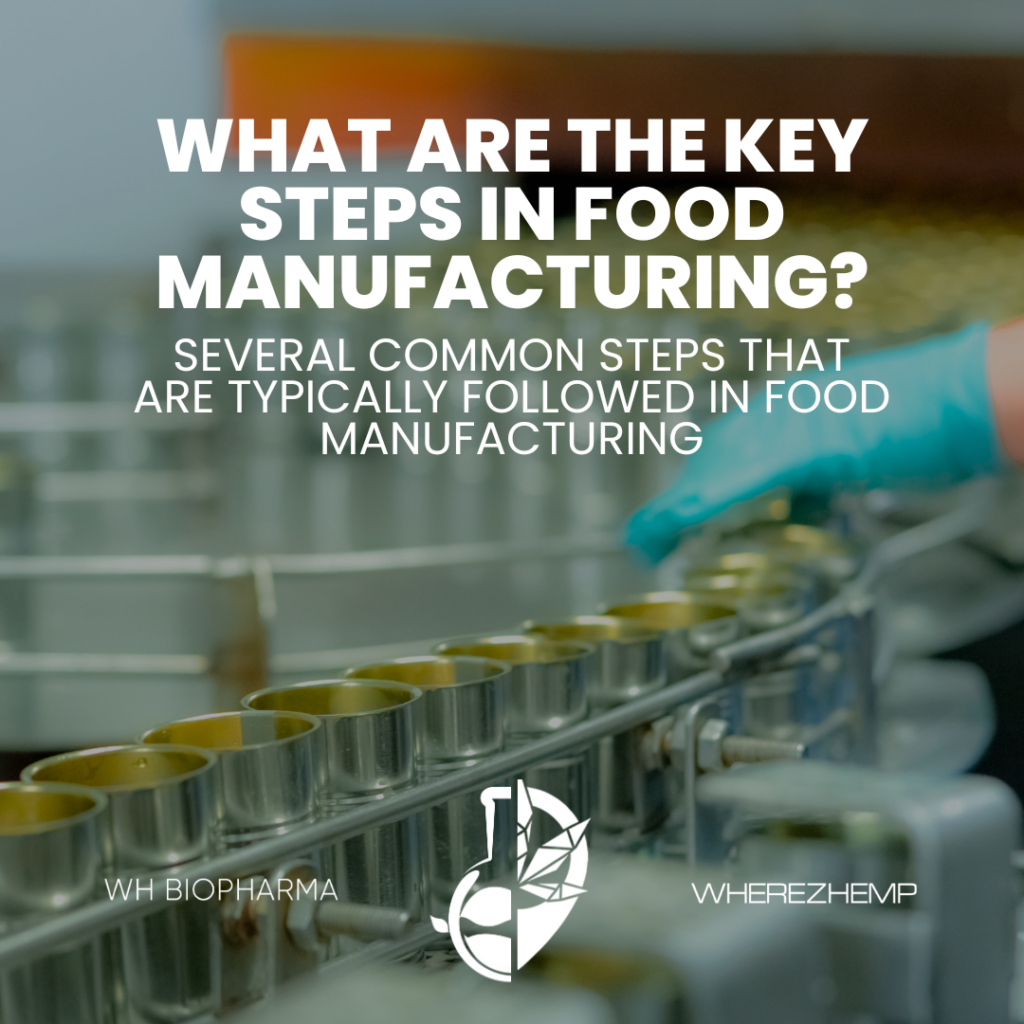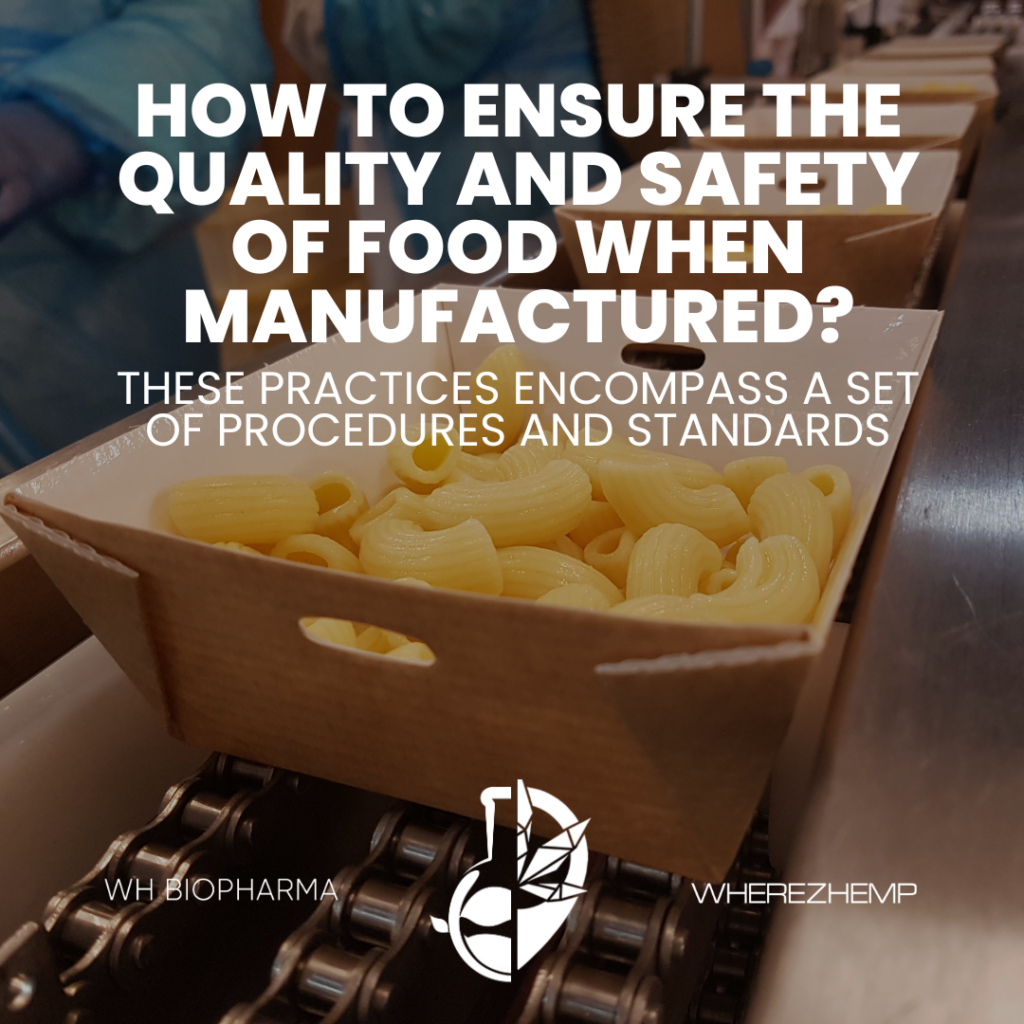Food manufacturing involves the transformation of raw ingredients into processed food products suitable for consumption. Ensuring quality and safety throughout the manufacturing process is crucial to protect consumer health and maintain product integrity. Several key steps are taken in food manufacturing to achieve these objectives.
Firstly, it is essential to establish rigorous quality control measures. This begins with sourcing high-quality ingredients from reputable suppliers. Raw materials should undergo thorough inspection and testing to ensure they meet predetermined quality standards. Any substandard ingredients should be rejected, as they can compromise the final product’s safety and quality. Additionally, manufacturers must maintain a clean and sanitized production environment to prevent contamination and cross-contamination of food products.
Secondly, implementing effective hazard analysis and critical control point (HACCP) systems is vital. HACCP is a systematic approach to identify, assess, and control potential hazards in food production. This involves conducting a hazard analysis to identify potential biological, chemical, and physical hazards. Critical control points (CCPs) are then established to monitor and control these hazards. Regular monitoring, verification, and documentation of CCPs ensure that the manufacturing process remains safe and meets regulatory requirements.
Thirdly, proper labeling and packaging play a significant role in ensuring consumer safety and providing accurate information about the product. Clear and accurate labeling helps consumers make informed choices, especially regarding potential allergens, nutritional information, and storage instructions. Packaging materials should be appropriate for the product, preventing contamination and preserving its quality throughout its shelf life.
Lastly, conducting regular quality inspections and audits is crucial to maintain consistent product quality and safety. Manufacturers should perform both internal and external audits to evaluate their adherence to quality and safety standards. These inspections help identify any deviations or areas of improvement and facilitate corrective actions to rectify any issues.
Ensuring quality and safety in food manufacturing requires a comprehensive approach. This includes establishing robust quality control measures, implementing HACCP systems, proper labeling and packaging, and conducting regular inspections and audits. By following these key steps, food manufacturers can maintain high standards, safeguard consumer health, and deliver safe and reliable food products to the market.
What Are The Key Steps in Food Manufacturing?
The key steps in food manufacturing can vary depending on the specific product and process involved. However, there are several common steps that are typically followed in food manufacturing:

Recipe and Formulation
The first step in food manufacturing is to develop or follow a recipe or formulation for the desired product. This involves determining the specific ingredients, their quantities, and the manufacturing instructions.
Sourcing and Receiving Ingredients
High-quality ingredients must be sourced from reputable suppliers. Upon arrival, the ingredients are carefully inspected to ensure they meet the required standards for freshness, quality, and safety.
Preparation and Mixing
The ingredients are prepared and combined according to the recipe or formulation. This may involve cleaning, cutting, and processing the raw ingredients, as well as measuring and mixing them in the correct proportions.
Cooking or Processing
Depending on the product, cooking or processing steps may be required. This can include methods such as baking, frying, boiling, pasteurization, or other heat treatments to ensure food safety and achieve the desired texture and taste.
Packaging
Once the food product is prepared, it is packaged appropriately. This includes selecting suitable packaging materials, such as bottles, cans, boxes, or bags, and filling them with the product. Packaging serves to protect the food from contamination, extend its shelf life, and provide information to consumers.
Quality Control and Testing
Throughout the manufacturing process, quality control measures are implemented to ensure product consistency, safety, and adherence to standards. Regular testing and inspections are conducted to monitor factors such as taste, texture, color, nutritional content, and microbial safety.
Storage and Distribution
After manufacturing and quality control, the food products are stored in suitable conditions to maintain their freshness and quality. Proper temperature control and inventory management are critical to prevent spoilage. The products are then distributed to retailers, wholesalers, or directly to consumers.
Compliance with Regulations
Food manufacturers must comply with various regulations and standards set by governmental bodies, such as food safety regulations, labeling requirements, and industry-specific guidelines. It is essential to ensure that the manufacturing process meets all relevant legal and safety obligations.
Continuous Improvement
Food manufacturers strive for continuous improvement in their processes and products. This involves analyzing customer feedback, conducting research and development, and implementing innovations to enhance product quality, safety, and efficiency.
By following these key steps, food manufacturers can produce safe, high-quality food products that meet consumer expectations and regulatory requirements.
How to Ensure the Quality and Safety of Food when Manufactured?
Ensuring the quality and safety of food during the manufacturing process is of utmost importance to protect consumer health and maintain product integrity. Here are some key steps to help achieve this:

Good Manufacturing Practices (GMP): Implement and strictly follow GMP guidelines. These practices encompass a set of procedures and standards that ensure food is consistently produced and controlled in a safe and hygienic manner. This includes maintaining a clean and sanitized production environment, proper handling of ingredients, and preventing cross-contamination.
Hazard Analysis and Critical Control Points (HACCP): Implement a HACCP system, which is a systematic approach to identify, assess, and control potential hazards in food production. This involves conducting a thorough hazard analysis, identifying critical control points (CCPs) where hazards can be controlled, and establishing monitoring and control procedures at these points. Regular monitoring and verification of CCPs are essential to ensure food safety.
Supplier Control: Establish strong supplier control measures. This includes selecting reputable suppliers who adhere to strict quality and safety standards. Conduct regular audits and inspections of suppliers to verify their compliance. Establish specifications for ingredients and raw materials, and conduct testing and inspection upon receipt to ensure their quality and safety.
Quality Assurance and Testing: Implement a robust quality assurance program. This involves conducting regular testing and inspections throughout the manufacturing process. Testing can include microbiological analysis, sensory evaluation, chemical testing, and nutritional analysis. Implementing quality control checkpoints at various stages helps identify any deviations from quality standards and allows for corrective actions to be taken.
Allergen Management: Develop and implement a comprehensive allergen management program. Proper segregation, labeling, and handling of allergenic ingredients are crucial to prevent cross-contamination and allergic reactions. Implement thorough cleaning and sanitation procedures to minimize the risk of allergen contamination.
Employee Training and Awareness: Provide comprehensive training to employees regarding food safety, hygiene practices, and proper manufacturing procedures. Ensure that all employees understand and follow the necessary protocols to maintain food quality and safety. Regular training sessions and reminders on hygiene, sanitation, and safety practices can help reinforce good habits.
Traceability and Recall Procedures: Establish robust traceability systems to track ingredients and finished products throughout the manufacturing process. This enables quick identification and removal of potentially unsafe products from the market in the event of a recall. Maintain detailed records of ingredients, suppliers, production batches, and distribution to facilitate efficient traceability.
Regulatory Compliance: Stay up to date with relevant food safety regulations and ensure compliance with them. Regularly review and update manufacturing processes and procedures to align with changing regulations. Regularly engage with regulatory authorities and participate in inspections and audits to demonstrate compliance.
Continuous Improvement: Strive for continuous improvement in food manufacturing processes. Analyze consumer feedback, conduct internal audits, and seek opportunities for optimization and innovation. Regularly review and update quality management systems to enhance product quality and safety.
By following these steps and maintaining a strong commitment to quality and safety, food manufacturers can minimize risks, ensure the production of safe and high-quality food products, and build trust with consumers.





